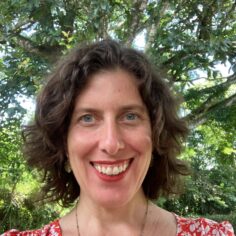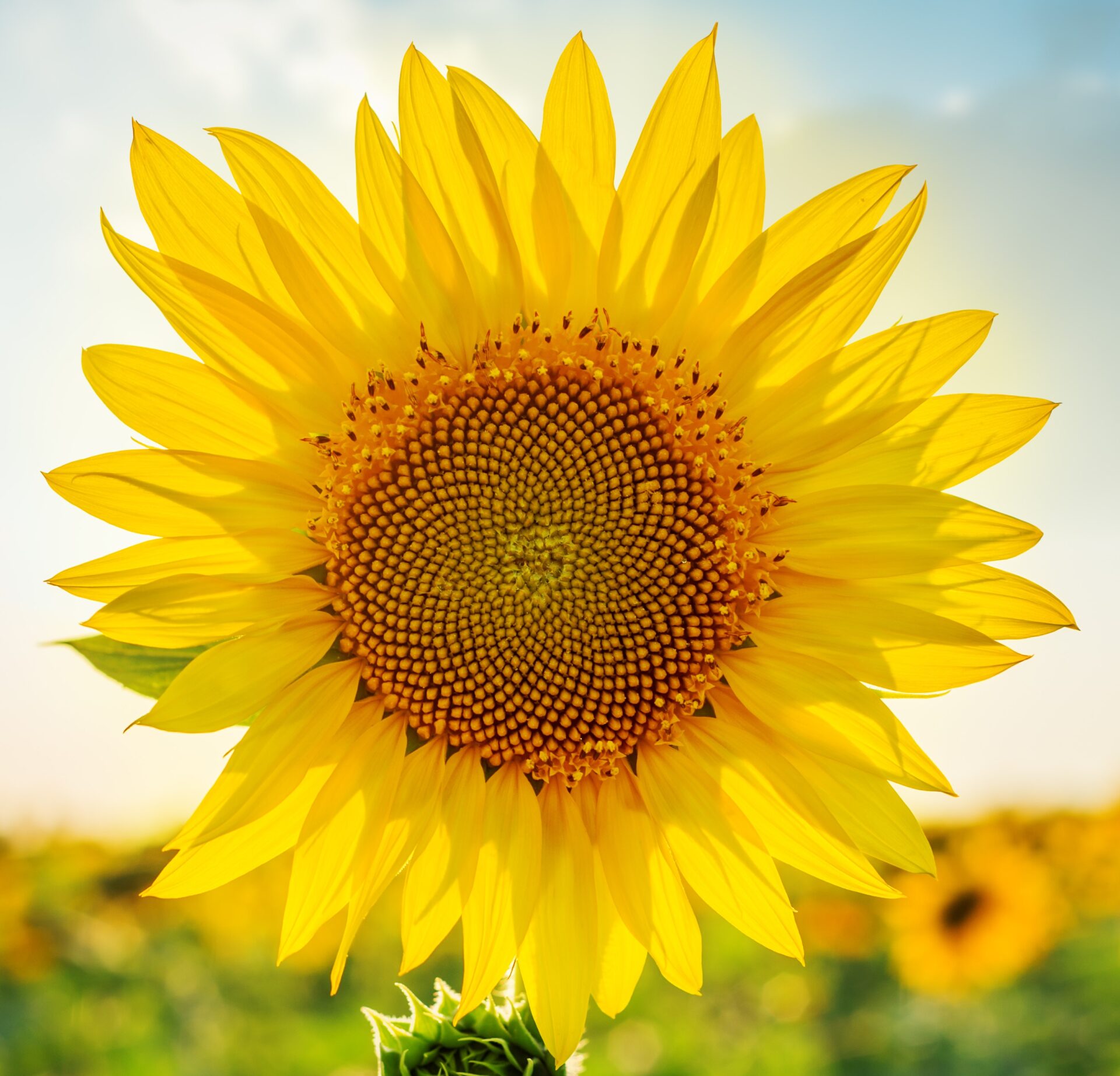Order of Interbeing member Stephanie Knox Steiner shares her efforts to be a continuation of Thầy through her livelihood and vocation as a professor at the University for Peace.
By Stephanie Knox Steiner on
Aware that much suffering is caused by war and conflict, we are determined to cultivate nonviolence, compassion, and the insight of interbeing in our daily lives and promote peace education,
Order of Interbeing member Stephanie Knox Steiner shares her efforts to be a continuation of Thầy through her livelihood and vocation as a professor at the University for Peace.
By Stephanie Knox Steiner on
Aware that much suffering is caused by war and conflict, we are determined to cultivate nonviolence, compassion, and the insight of interbeing in our daily lives and promote peace education, mindful mediation, and reconciliation within families, communities, ethnic and religious groups, nations, and in the world. We are committed not to kill and not to let others kill. We will not support any act of killing in the world, in our thinking, or in our way of life. We will diligently practice deep looking with our Sangha to discover better ways to protect life, prevent war, and build peace.
-The Twelfth of The Fourteen Mindfulness Trainings
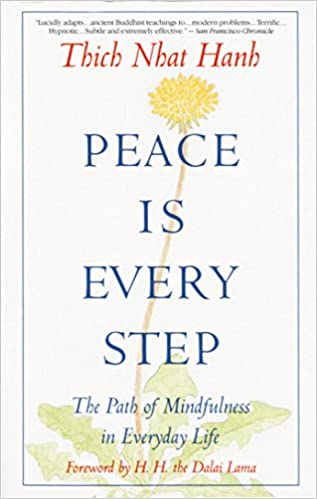
When I first heard the Twelfth Mindfulness Training, I knew I was home. I had just graduated with my master’s degree in peace education from the University for Peace (UPEACE) and had moved back to San Diego, California, US while working on a teacher professional development program in peace education for Teachers Without Borders. I had been inspired on my path of peace education by reading Thầy’s book Peace Is Every Step when I was about twenty. This book set me on a path of making my life a work of art for peace. Eventually, this aspiration took me to UPEACE to study peace education and then to San Diego and Deer Park Monastery. There, in the Ocean of Peace Meditation Hall, I first heard the Twelfth Mindfulness Training during The Fourteen Mindfulness Trainings recitation ceremony. The words peace education rang through me like the great bell at the front of the hall. Here was a spiritual path and community that aligned with my vocational path and deepest aspirations; I knew I was at home. Fast forward fourteen years. I am now a resident faculty member at UPEACE, teaching in the peace education master’s program as my humble effort to be a continuation of these teachings in my livelihood, vocation, and life.
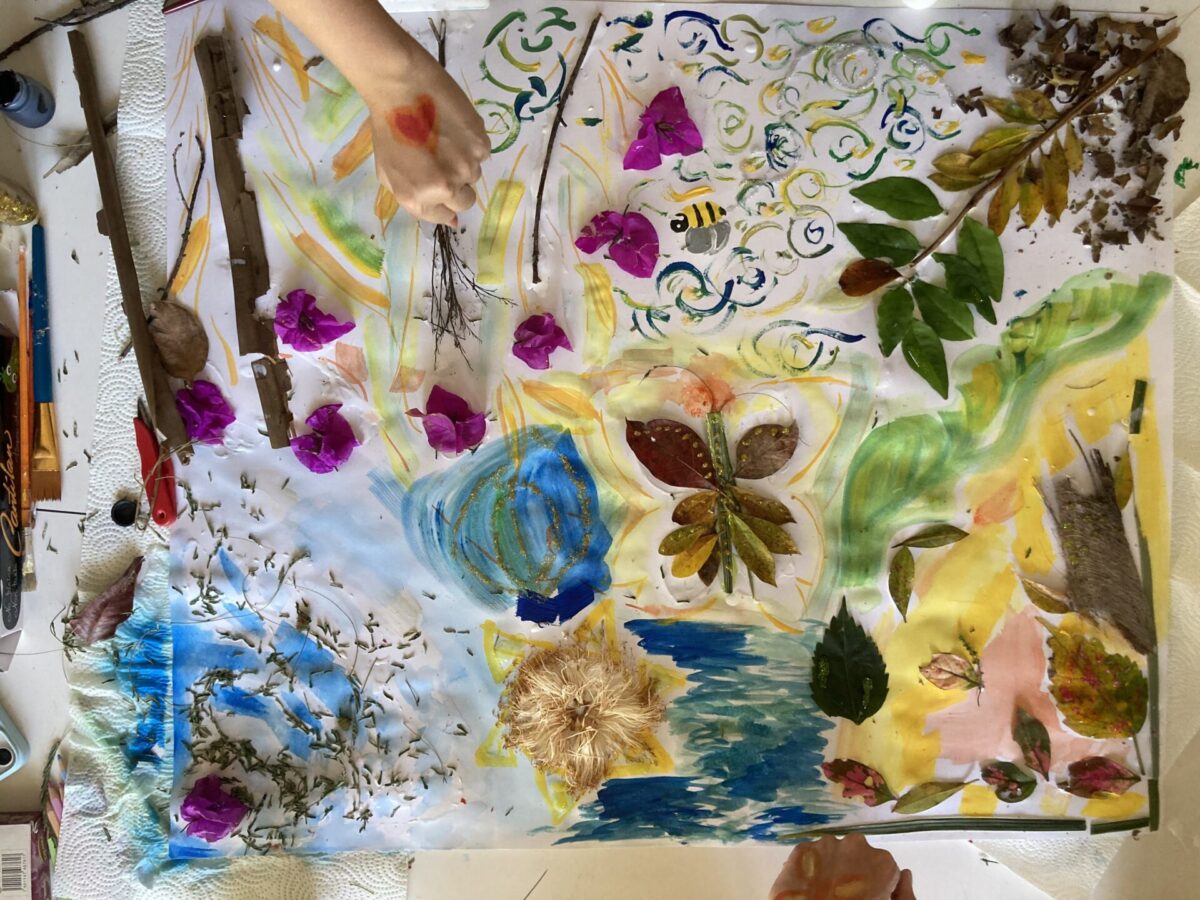
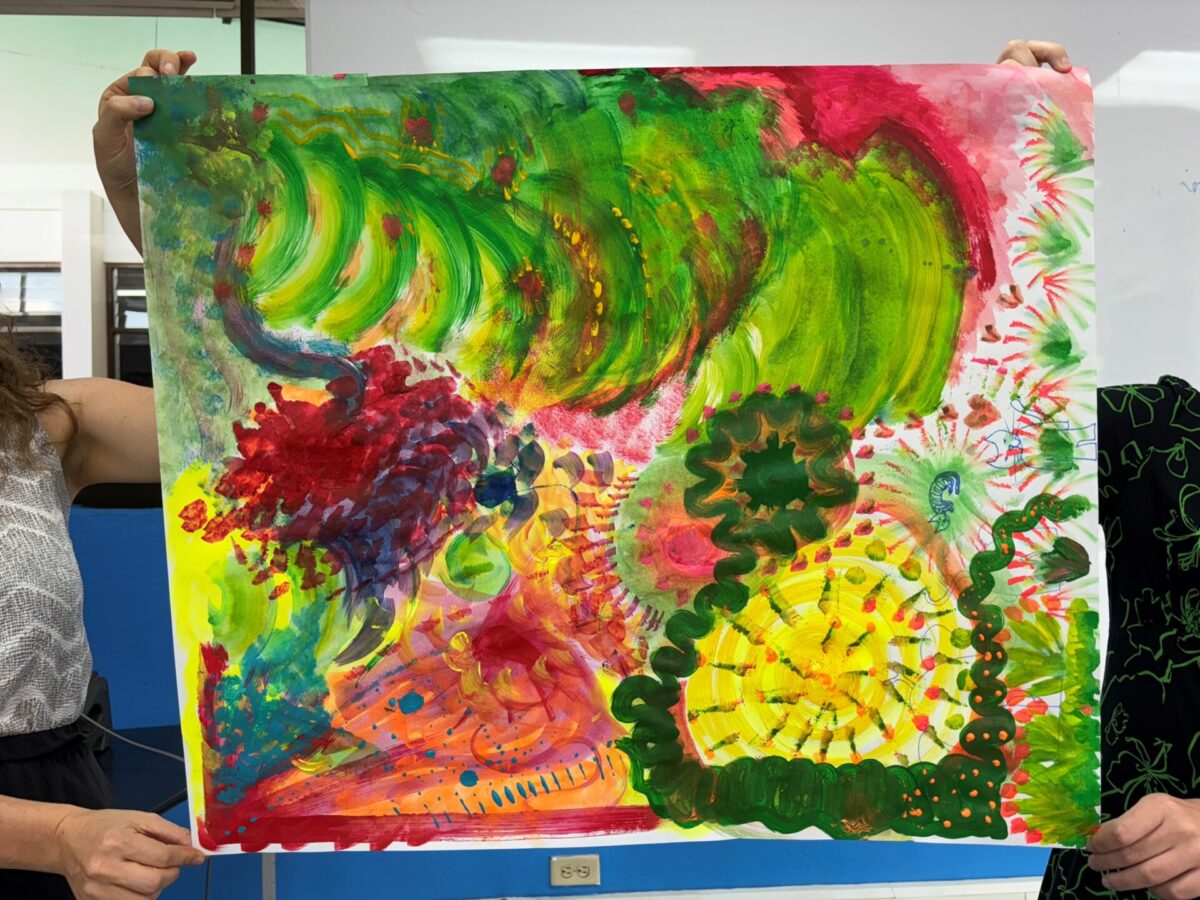
For me, the essence of peace education is unlearning the illusion of separateness and remembering or relearning our interbeing. One hand of peace education is understanding the root causes of violence. Each of The Mindfulness Trainings begins with “aware of the suffering.” To start, we have to be aware. So much violence in our world is rooted in the illusion of separateness, which allows people to create hierarchies enforced through domination and violence. The illusion of separateness underlies colonialism, white supremacy, and patriarchy—systems and cultures of violence, domination, and separation. These systems permeate our relations at personal and global levels and have been operating for centuries, causing harm internally and externally for each of us, albeit in vastly different ways dependent on our identities and positions.
Peace education means seeing clearly and understanding this illusion, in a historic and contemporary context. It means understanding these roots and how they have become systematized; it means disrupting this illusion within ourselves when we notice it; it means healing from the violence, harm, trauma, and destruction of this separation; it means imagining other ways of living and remembering our interbeing with each other and with life itself.
Remembering our interbeing is the path forward, the other hand of peace education. If we remember our interbeing, we no longer want to hurt each other. Instead, we want to find ways of being and living well together—ways that allow everyone to be free and to thrive, that allow us to transform conflict nonviolently and creatively, that allow us to relate to the Earth as our mother and great ancestor rather than something to exploit.
A beautiful vision of peace that I love, which comes from the Earth Charter, describes peace as “the wholeness created by right relationships with oneself, other persons, other cultures, other life, Earth, and the larger whole of which all are a part.”1 This description aligns with the vision of interbeing at the heart of peace education. In the UPEACE classroom, we practice this vision of peace in many ways. We are very lucky: our physical classroom space is a bamboo hut at the edge of a protected forest in Costa Rica. We are immersed in beautiful natural surroundings; we do not need to try for nature to be our teacher, we just need to be aware. Our recent introductory peace education class took place in the peak of the rainy season, and every day we had to trudge through mud, trying to avoid slipping, to get to class. The breeze through the leaves of the trees, the birdsong, and the sweeping views of Costa Rica’s Valle Central all permeated our learning experience, reminding us that we, too, are nature.
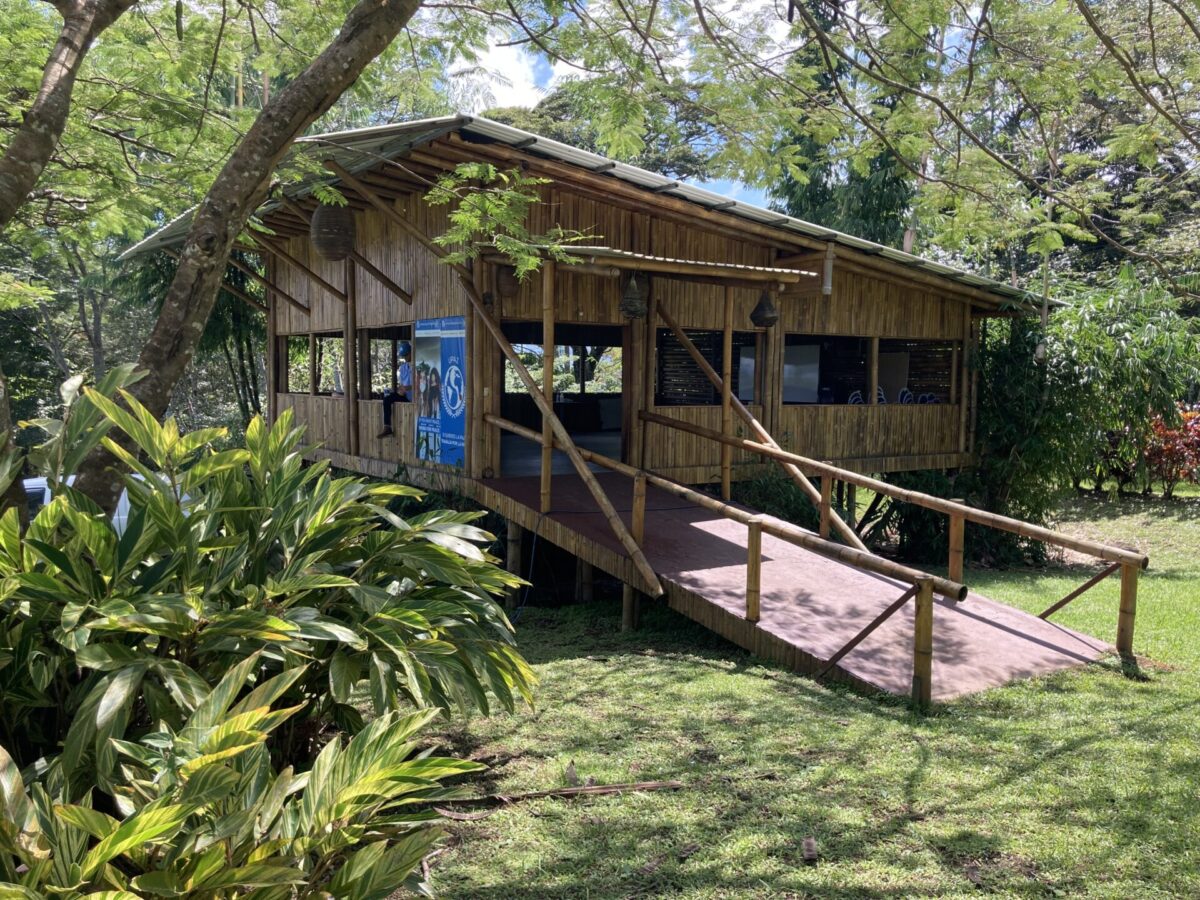
We begin class with music to touch and water our seeds of joy, calm, and happiness. Then, we share a moment of mindfulness to allow us to arrive together and help us be aware. Our moment of mindfulness allows us to be in touch with our bodies, minds, and feelings so that as we move through our class time and perhaps touch upon difficult topics, we can stay present to our inner landscape. In fact, this awareness becomes a key part of our learning process. Peace requires our presence and attention, and it is hard to cultivate peace if we are not present to ourselves and those around us. We create a learning altar to honor our roots and lineages, to honor the teachers we learn from and with, and to remember each day that the path of learning is sacred, not just a transaction.
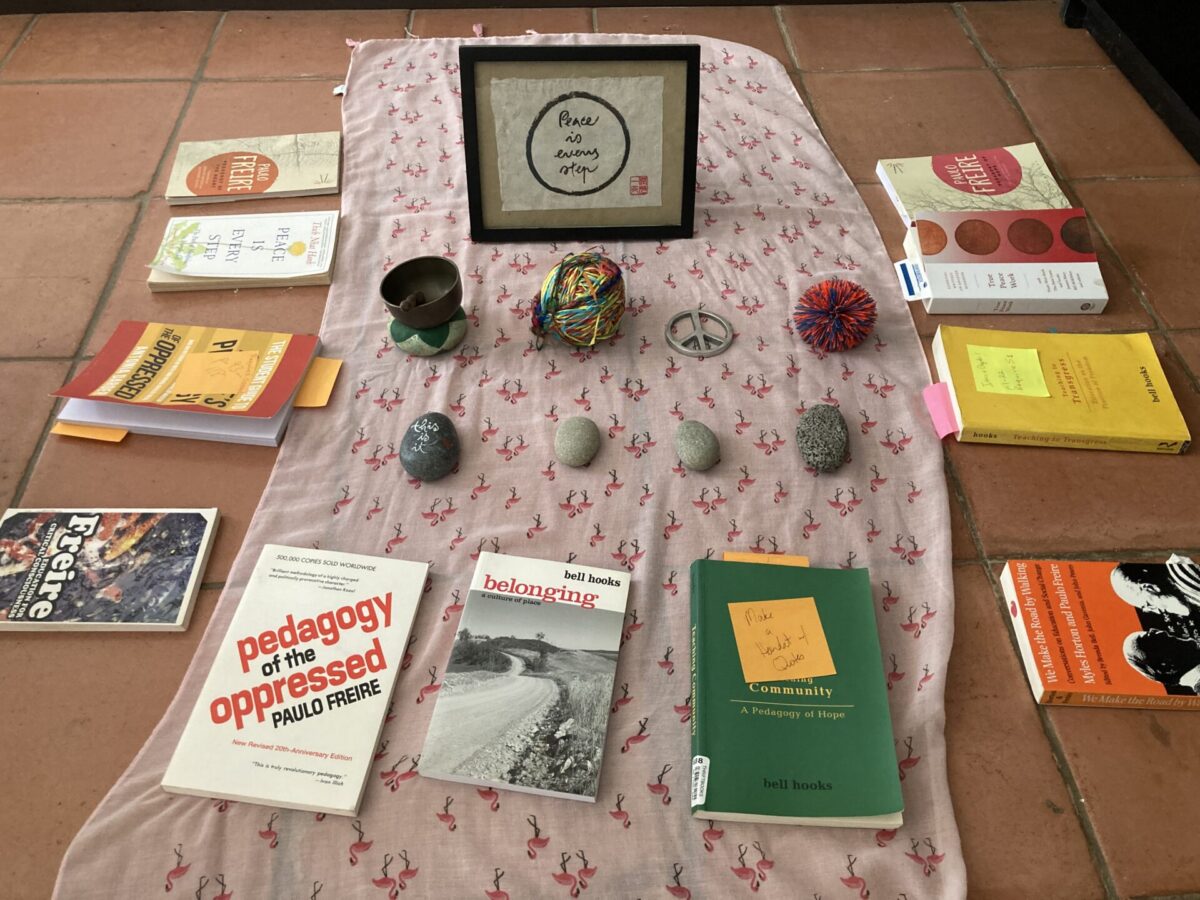
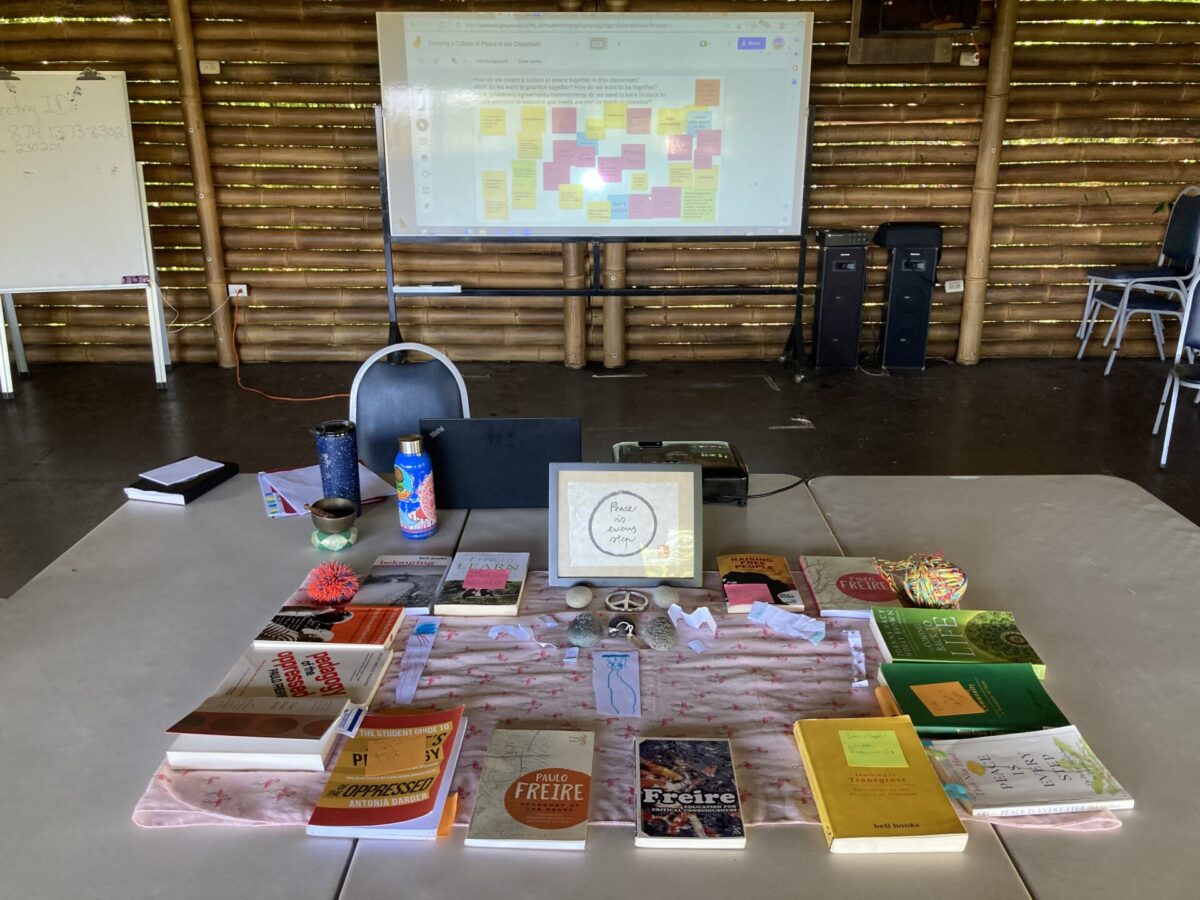
We check in so we have a sense of how we are doing as a collective, to understand what each of us is bringing with us that day. We see ourselves as a learning community; we are not doing this learning and unlearning alone. This, for me, is the heartbeat of peace education and the most important, most beautiful, and sometimes most challenging work we do together. This is interbeing in practice—to understand and practice that we are not separate individuals learning alone; we are a community, we inter-are. This extends well beyond the classroom as we choose to be together beyond the formal spaces of learning.
Modern formal schooling can be highly individualistic, which is part of how many of us learn the illusion of separateness. Even though at UPEACE we are in a formal academic system still very much rooted in some of these philosophies, we disrupt this illusion as much as we can, especially through collaboration and co-creation. We write poetry and articles together. Students create group projects and co-facilitate classes. We dance and sing and howl and meditate together.
Modern formal schooling often overvalues rational and intellectual thinking as the only way of knowing. Part of our peace education practice is remembering there are many paths to know, and learning is not just lectures and readings. We can learn from our bodies, our emotions, our relationships, and our experiences outside of the classroom. We think about who our teachers are, knowing the Earth is one of our greatest teachers. As the Second of The Fourteen Mindfulness Trainings reminds us, truth is found in life; life is our greatest teacher. In peace education, we try to remember this daily.
As I reflect on my own role as a teacher, I am taken back to the Ocean of Peace Meditation Hall. In 2011, I was on retreat with Thầy and the Sangha. After reading Thầy’s words for many years, it was the first time I had the opportunity to be in his presence. More than anything he said during those days, what I remember most are little things—how he opened a door, how he erased the white board, how his smallest actions embodied and radiated peace. In the packed hall of one thousand people, you could truly feel his peaceful presence and how powerful his peace was. I can still feel it today. This, for me, is the greatest peace teaching I have ever received.
At a moment when we are witnessing and experiencing so much violence at the collective level, peace can feel very far away. Peace education is not a fast solution, but I believe it is part of the long-term work needed to shift toward more life-affirming and life-giving ways of being, knowing, and living. If we want to see a more peaceful world, we need educational spaces that teach toward it. Returning to Thầy’s words and living example, which continue to reverberate long after he has left his physical body, we can touch peace in every step and every breath, and we can cultivate peace right where we are, in ourselves and in our relationships. In my office, I have a copy of Thầy’s calligraphy: Peace in oneself, peace in the world. Even when peace in the world might feel far away, through our actions in this moment and through unlearning separation and remembering our interbeing we can create peace together, knowing we are not doing it alone.
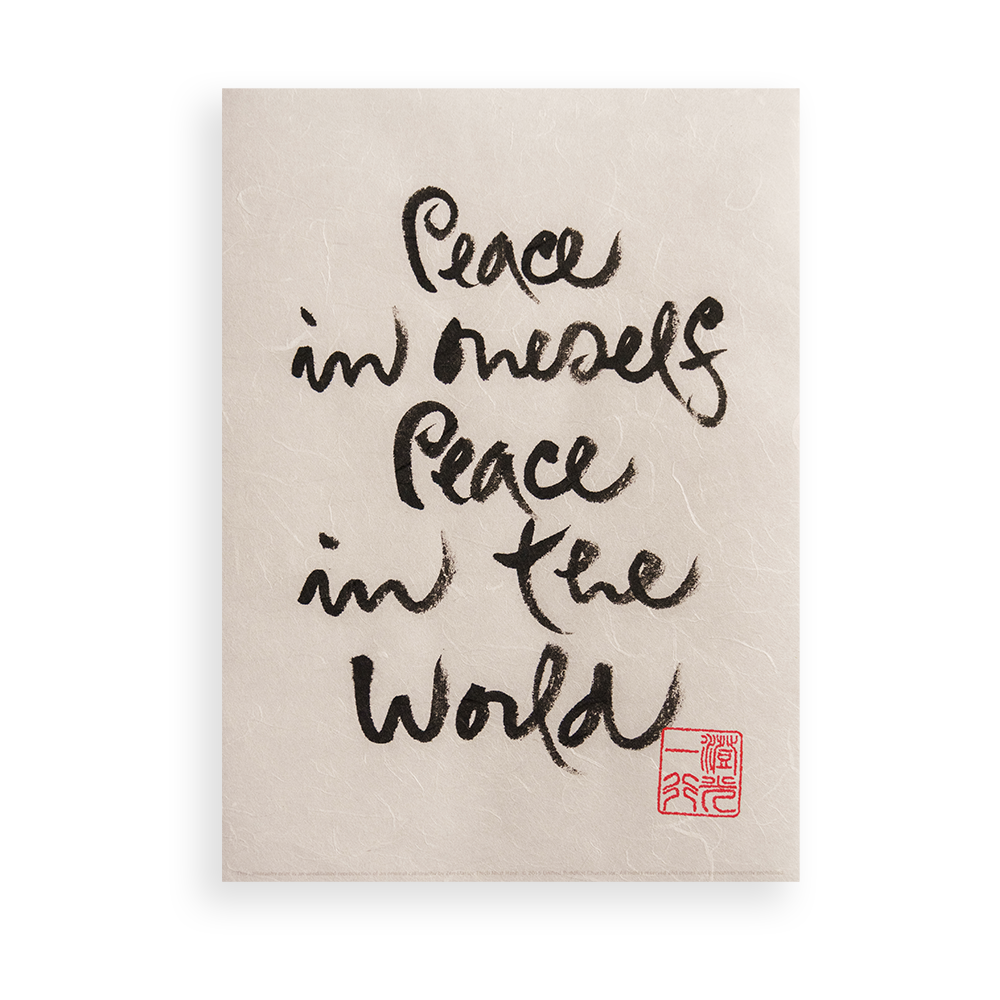
1 Earth Charter Commission, 2000, “IV Democracy, Nonviolence, and Peace,” Earth Charter. https://earthcharter.org/read-the-earth-charter/democracy-nonviolence-and-peace/
